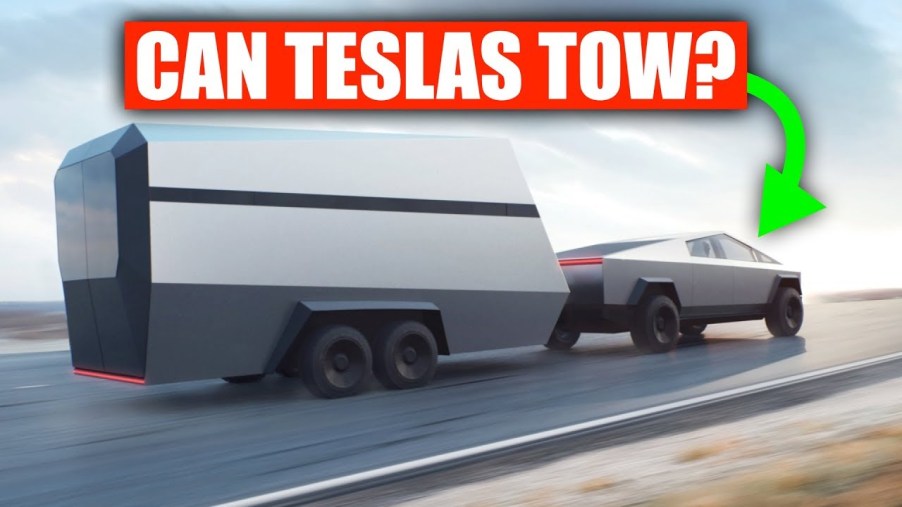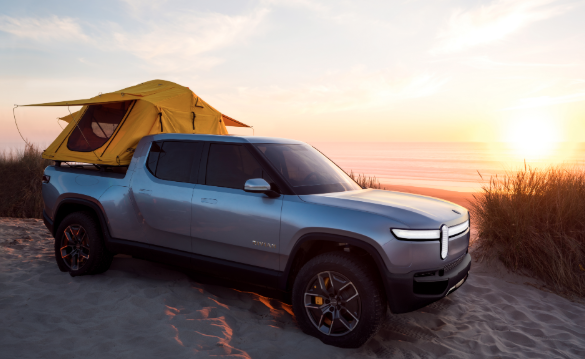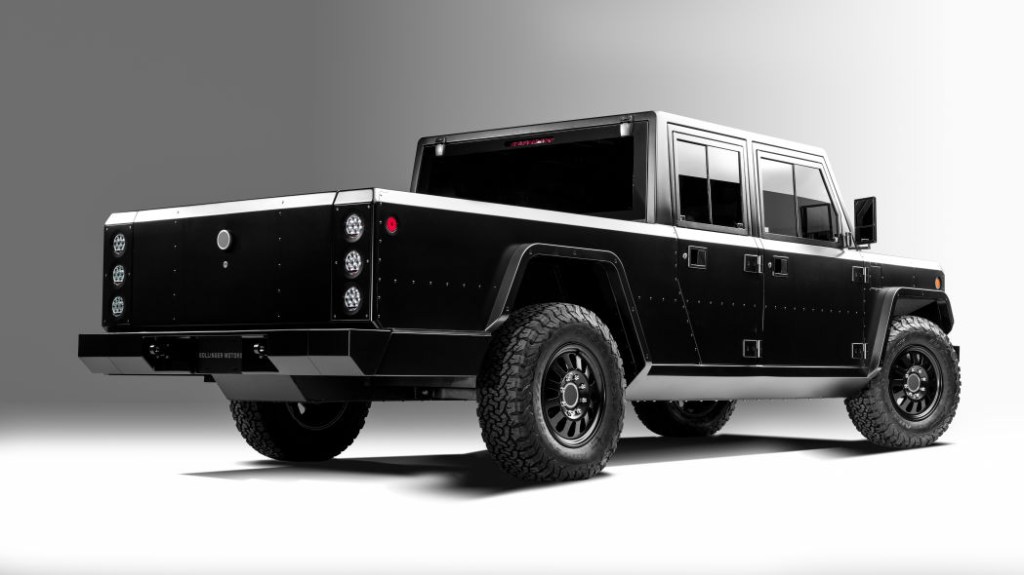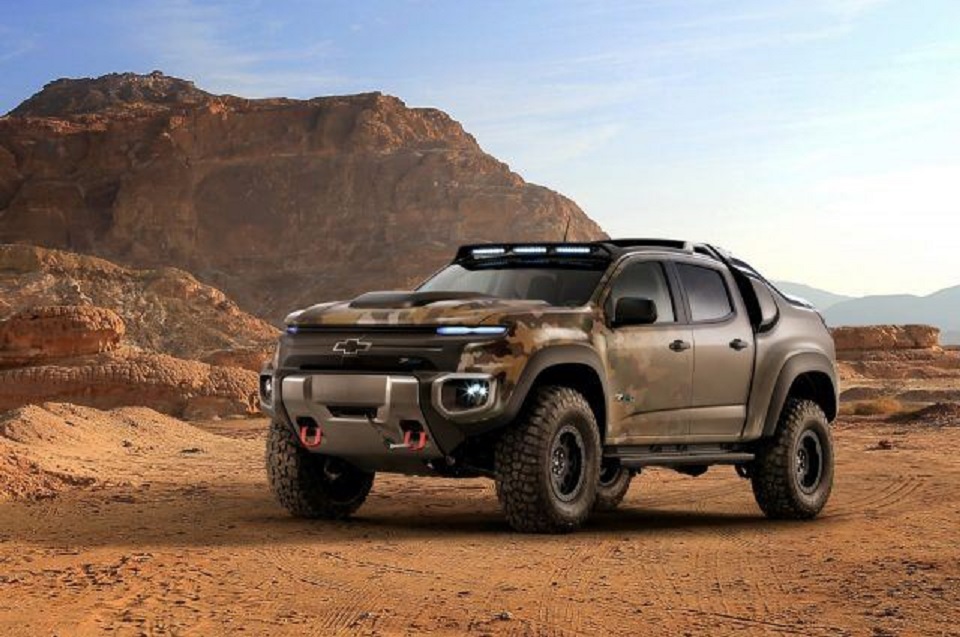
Cybertruck Towing Issues Are an EV Problem, Not a Tesla Problem
Electric pickups aren’t competing with ICE pickups solely on range, but on towing, too. Tesla appeared to demonstrate that there’s nothing to worry about when the Cybertruck towed that F-150 uphill. There’s also an electric F-150 out with a towing capacity of 18,000 lbs. However, although Tesla claims the tri-motor Cybertruck will tow up to 14,000 lbs, there’s more to the video than meets the eye. Not that other automakers haven’t similarly skewed physics in their favor. Ford did in the electric F-150 ‘million pounds’ ad. But electric vehicles do have a towing problem, but it isn’t weight.
The Tesla Cybertruck’s towing problem
Jason Fenske of Engineering Explained is one of the people who analyzed the Tesla-Ford tug-of-war closely. And now, he’s back with another video explaining the issue the Tesla Cybertruck faces with towing.
Simply put, it’s range. Yes, Tesla claims the tri-motor Cybertruck will have a max range of 500 miles. However, as is the case with every vehicle, electric or not, towing something eats up range. That’s because, as Fenske and Road & Track point out, the trailer drastically increases a vehicle’s drag coefficient. The Cybertruck is more aerodynamic than it appears, but it’s still subject to drag.
And this is before the increased weight from the trailer gets taken into account. We have mentioned the issue of weight before in regards to the Cybertruck’s stainless-steel body. However, it is possible Tesla shaped its electric pickup specifically to mitigate wind drag. Doug DeMuro, in his Cybertruck video, discusses how air passes into a truck’s bed and slows it down. Towing exacerbates this effect. InsideEVs did attempt to render a more ‘conventional’-looking Tesla truck, but it appears Tesla avoided this design for drag-related reasons.
Tesla Cybertruck towing issues, by the numbers
Nevertheless, Fenske calculates that a Tesla Cybertruck towing a loaded trailer up a 1% incline at 75 mph will use 85% of its charge to do 100 miles. Dropping travel speed to 60 mph consumes roughly 73% over the same distance. And this is in a truck supposedly capable of traveling up to 500 miles on a charge.
However, as Fenske explains, this isn’t a problem with the Cybertruck or Tesla specifically. This is an issue with every electric vehicle.
The Tesla Cybertruck isn’t the only EV with towing issues
Fenske also runs through the towing calculations for a Tesla Model X. At the moment, the Model X has the largest production battery pack of any EV: 100 kWh. And it’s also rated to tow 5000 lbs. But, on the same 1% incline, at the same 75 mph speed, the Model X can’t even do 100 miles. Even along a flat road, to go 100 miles with a trailer, the Model X would use up almost 80% of its charge. And the EPA certifies it for 328 miles.

By the time the Cybertruck goes on sale, both the Rivian R1T and the Bollinger B2 will also be available. The R1T will offer a 180-kWh pack, and the B2 a 120-kWh pack. But even these electric trucks will have range issues when it comes to towing.

And again, it’s not like ICE trucks don’t have to deal with this, either. Fenske also compared the Model X and Cybertruck to a conventional gasoline F-150. But the ICE truck’s advantage is that gasoline is both energy-dense and easy to replenish. Modern batteries and electric motors are significantly more efficient than any gasoline or diesel engine. But batteries just don’t store as much energy as gasoline—and you can’t recharge an EV battery pack in 5-10 minutes.
Are there any solutions?
In Fenske’s math, he concludes that if batteries could store 2 or 3 times more energy, EVs would be comparable to ICE trucks when it came to towing. That’s because, although Fenske’s calculations indicate an F-150 would only have to use about 14% of its gasoline’s energy to tow up that 100-mile hill, gasoline engines really max out at around 30% energy efficiency. Increasing battery capacity wouldn’t reduce the energy needed to tow up the hill. But it would mean the battery retains more of a charge.
Increasing capacity can be done just by increasing the number of cells in a battery pack. But eventually, cooling issues and space limit this kind of expansion. But another way of increasing capacity is by increasing the battery’s energy density. Changing the battery chemistry changes the discharge reactions, and may increase how much energy that releases.
New chemistry and alternate technology
One potential contender is lithium-sulfur. In a ScienceDaily report, researchers at Sweden’s Chalmers University of Technology had measured a lithium-sulfur battery as potentially storing up to 5 times more energy than a normal lithium-ion one. Sulfur would also be cheaper, and less environmentally-harmful than some of the other components in lithium-ion batteries. However, lithium-sulfur batteries are still several years away from full-scale production.

Interestingly, hydrogen-powered EVs would also solve this towing issue. Although the Chevrolet Colorado ZH2 hydrogen-powered military truck hasn’t been tow-rated, the gasoline ZR2 can tow up to 7700 lbs. But torque isn’t the issue. The ZH2’s range is presumably classified. But the cool thing about hydrogen is refueling time. Refilling a hydrogen tank takes no more time than refilling a gasoline or diesel one. We just need more filling stations and manufacturer support.


